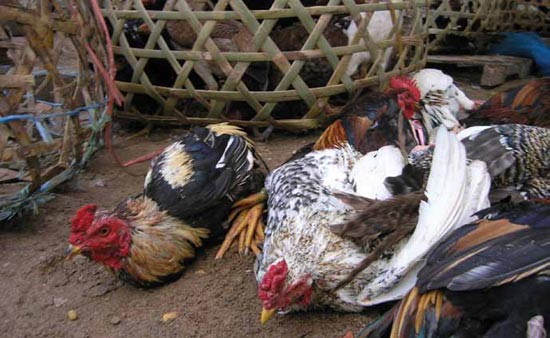FAO: H5N1 resurgence possible

A "major resurgence" of highly pathogenic avian influenza could occur, and an emerging viral strain currently infecting birds is less vulnerable to existing vaccines, according to the Food and Agriculture Organization of the United Nations.
Information gathered so far hasn't indicated the strain is more dangerous, however, and a new vaccine is being manufactured, according to the World Organisation for Animal Health (OIE).
An Aug. 29 FAO announcement encouraged "heightened readiness and surveillance," given signs that a mutated strain of H5N1 highly pathogenic avian influenza virus was spreading. The FAO has also received confirmation of nearly 800 outbreaks with H5N1 HPAI in wild and domestic birds in 2010 and to date in 2011 in Asia, Eastern Europe, and the Middle East. The number of recorded outbreaks had generally declined from 2004-2008, reaching a low of about 300 annually, ending in mid-2008.
An FAO newsletter states that the number of reported outbreaks of H5N1 HPAI increased starting in July 2008, particularly in Asia. The increase could be attributable to improved surveillance and emergence of the new strain, which is known as clade 2.3.2.1.
The new strain, which has been found in China and Vietnam, is particularly concerning because of its ability to "sidestep the defenses provided by existing vaccines," the FAO announcement states. Veterinary services in Vietnam were considering launching a novel, targeted vaccination campaign.
The virus' circulation in Vietnam "poses a direct threat to Cambodia, Thailand, and Malaysia as well as endangering the Korean Peninsula and Japan further afield," the announcement states. "Wild bird migration can also spread the virus to other continents."
Glaïeul Mamaghani, deputy head of the OIE's communication unit, said the emergence of any new strain should be treated with caution, but epidemiologic information received so far had not indicated the variant was more dangerous or more easily spread. The organization also has not received an increased number of notifications about H5N1 infections in 2011 or since the variant was identified.
The strain's emergence shows the need, however, for surveillance and monitoring in domestic and wild bird populations, Mamaghani said. An OIE reference laboratory in China has finished testing a vaccine against the new strain and begun manufacturing the vaccine, although a release date was not immediately available.
An Aug. 31 OIE announcement also indicates the emergence of the new strain was not cause for immediate alert.
"As is the case with human influenza vaccines whose composition needs to be reviewed every year, avian influenza vaccines need to be regularly tested to check whether they effectively combat the viruses circulating in the field," the OIE announcement states. "OIE Reference Laboratories and other partner laboratories are actively involved in ongoing surveillance and development of good quality vaccines that match the viruses of concern."
A scientific article in Eurosurveillance (Euro Surveill 2011;16:19941), "Avian influenza A(H5N1) in humans: New insights from a line list of World Health Organization confirmed cases, September 2006 to August 2010," indicates about 132 of 235 confirmed infections in people during that period resulted in death. Contact with potentially infected poultry was reported in 187 of the 194 cases where such information was available.